Tamya Bustamante - Changing Lenses
Tamya Bustamante - Changing Lenses
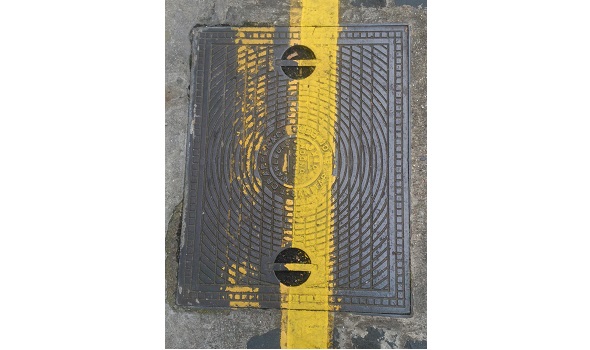
Integration is not about losing, dividing or letting go. Rather I feel it’s about opening our hearts and minds to something/someone new. It could be creating a space to sit side by side with another person who identifies as different to you and you to them, and engaging in a conversation about life on the blue/green planet.
In a way it’s sharing life’s recipes of love, laughter, sadness, music, food, joy, sorrow, glory, suffering and so on. As we all share the same basic needs and feel the same emotions, perhaps integration is more about remembering how similar we are and honouring our right to express and live out this right in our different ways.
Rather than coming from the perspective of: be like me, we could turn that around into a more inquisitive question of how am I like you, what similarities do we share? What differences can we teach each other? How can we open our minds to new worlds through listening to each other?
Integration, represents universal truth that everything in life changes, it all evolves.
Integration at its core perhaps is the practice of acceptance and compassion. About allowing co-existence without force. Integration as a fluid concept that changes rather than another rigid law enforced by the dominant group as a means to gain power, control and submission over the minority group.
I saw this as I was staring at the floor on the way to work. I did a double-look and thought it was a good first base representation. The yellow paint has sunk into the ridges beneath and is not only a line, but raised by the surface below.
It also makes you look at the circles beneath the yellow paint on the drain lid.
Somehow the drain and the yellow paint are brought together and it works. The drain continues to be there and do its job and so does the new paint.
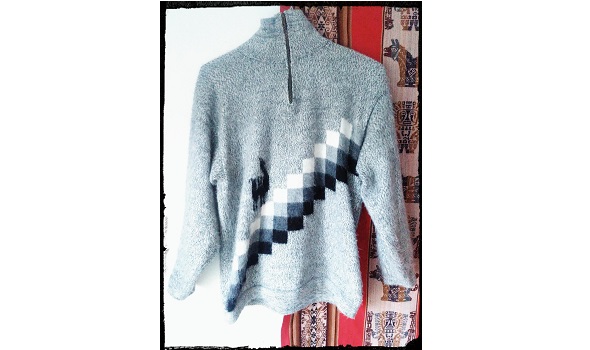
My Bolivian jumpers
This is one of my Bolivian jumpers. For me, it is a symbol of my integration of my Bolivian culture into my British culture. It’s about representing the beauty, talent, skills, traditions of Bolivia and bringing them to life here. It’s also about the usefulness of the Bolivian jumper. It is from Bolivia, from the Southern hemisphere, but look it works here too.
It's also interesting, I think, to see real representations of South American dress, not just Western designers representing what they think is Latin American in their designs.
People sometimes ask me about my jumper. The wider public may see something different like a statement - I wonder if it’s like wearing a tourist item - oh I’ve DONE south America - I can wipe that off my bucket list.
But I hope that by wearing it - it symbolises that there are other worlds to discover and not just the Western - or the Western interpretation of it. The wool, the fabric, the design - it is pure south American, Bolivian.
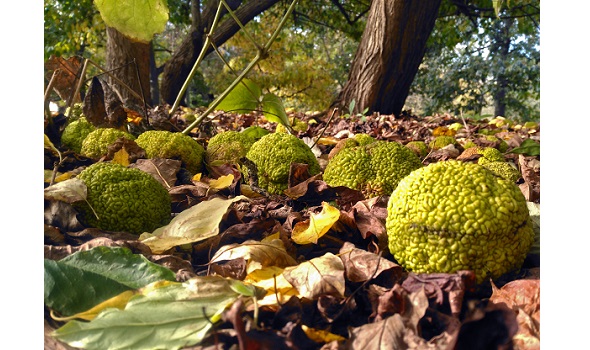
What helps integration?
One of the earliest things I can remember that helped me integrate (into) both my cultures are of the Bolivian parties my family used to go to in London. There, they had Bolivian music which involved bands with big drums, trumpets and live singers. The food was amazing and everybody was speaking Spanish. People were so welcoming. Some were dressed in traditional Bolivian clothes. Most of all it was seeing the way they interacted, the way they were with children, the way the old were integrated as part of the party. The way people danced together in two lines.
What helps integration is the sharing, enjoyment and celebration of cultural activities.
The photo here hows a gathering of Jackfruit. A tropical fruit, grown in an English country garden. Kew gardens to be exact. I love how the tropical family of fruit is gathered there enjoying the last of the summer sunshine, but nestled in the autumn leaves of a British woodland. This picture is a gathering of juxtapositions, which I feel represents integration.
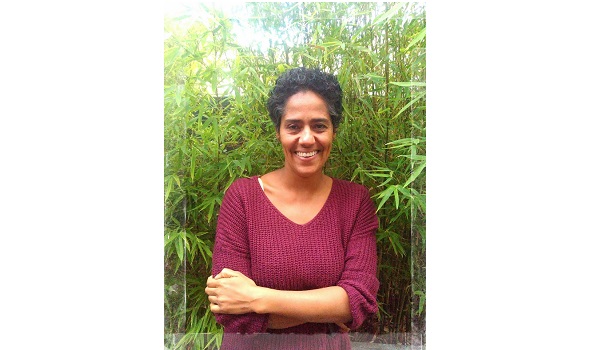
Ana - Brazilian volunteer at the Latin American Women’s Rights Service
What helps integration? I believe it is mostly people. Being with people who are themselves and who are identified with their specific set of cultural values, but who are open to being a part of the new and different culture they live in. They incorporate parts of the culture that work for them in their lives and at the same time, still remain in their hearts the way they want to identify with - for example sharing.
People who share stories about their life back in another country and who want to share and learn about yours.
People who are themselves, wherever in the world they are - they just are the place they identify with.
This goes for those who say they are a child of the world - having lived in many cultures, they enjoy adapting into different ways of living.
"Culture belongs to people."
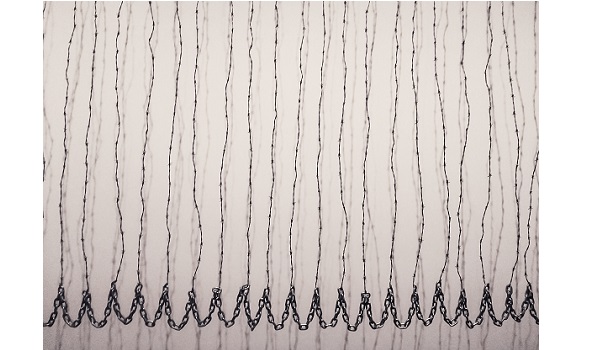
Photo of the exhibition: ‘Soul of a Nation’ at the Tate Gallery
What hinders integration? Fear. Fear of the unknown. It is a common state that humans - when they don’t know the truth in something - they tend to make it up, they make up what they think the realness of a situation is - in other words they make an assumption until truth comes to light.
This doesn’t always have a negative outcome, however, many times it can mean that they are neutral, neither particularly interested in something or not. Other times it can have very negative effects, where it cuts off people from the truth of a situation and even causes them to react in a negative way towards something or someone else.
This can cause the public to be hostile and disrespectful towards other people whose identity they perceive to be different from them. The hostility breeds fear and fear creates barriers. Emotional barriers bring physical ones just like these ones here. This was a huge piece hanging down from a wall and it deeply spoke to me about the depth of fear and how it can isolate us from our brothers and sisters, from other mothers and fathers.
Howver, I believe exhibitions such as “Soul of a Nation”, brings hope in education and bringing people together. We mourn the losses of life caused by fear and hate and instead bring compassion, kindness and the belief in the need for change.
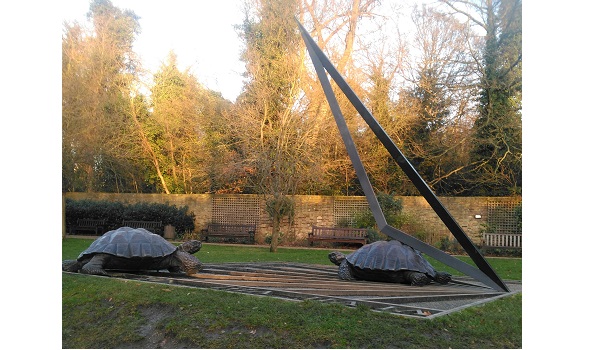
Turtles
I took this picture as I liked how it seemed as if the animal world was deciding fate rather than humans. Wise old tortoises mulling over life, time and universal concepts, that perhaps only ancient beings have lived long enough to possess the qualities to explore.
Reflecting on the impact of cultural values on integration I find that in our culture we live behind the mask of capitalism, which states we are all living in free and equal societies, that if you work hard enough anyone can rise up out of poverty and make a successful fulfilling life.
So we believe this is the only right way. There is a belief that now that a person lives in the West coming from another country they must think that this place is better than their home, so they should also aspire to become like the culture here. They must assimilate.
Applying cultural values to a concept like integration leads to stereotypical representations, narrow understanding, a dismissal of cultural difference and a de-valuing of that difference. It leads to the westerner assuming that they understand a whole part of something through seeing it through the Western looking glass.
Rather than open up when they are wrong and inquire, many people fight for their limiting beliefs; they fight to stay ignorant (which fuels their fear) rather than letting go into openness and peace.
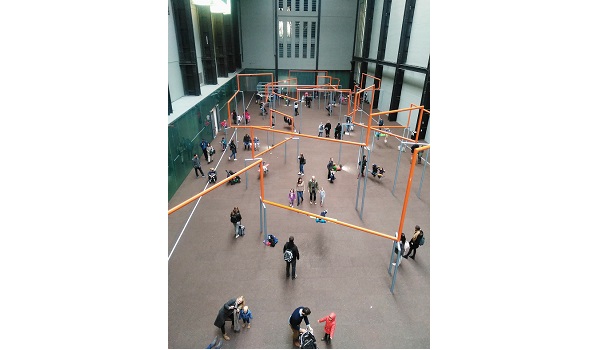
Tate
Welcoming, diverse, spatially accepting spaces facilitate integration. Art galleries make me feel integrated and feel like I belong to the place where they are. Art in this form has no words and I find galleries like the Tate are inclusive in their work. Spatially, the Tate is fantastic - it’s like there is room for everyone in there. It’s not necessarily the grandest building, but that is what I love about it, it is not pretentious or bourgeois - it is made real and raw by the exhibitions that they host. In attending an exhibition at the Tate, hanging out there, or working in the open spaces at the Tate - I feel at home. Photo from the Tate Gallery, London 2017
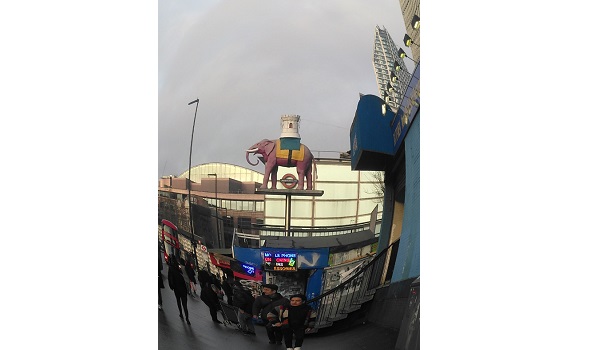
What do we need to build strong and resilient communities?
Human beings are social beings. It is part of our nature to need to be around others, connected and able to share life together. It is one of our basic needs and has become fractured in communities, resulting in people, especially migrants feeling isolated in London, despite it being an overcrowded city.
A way to address isolation is providing safe and affordable (if not free) spaces for communities to gather. Elephant and Castle, possibly soon to be named the Latin Quarter of South London, is a diverse space hosting a large portion the Latin American culture in London. In and around the shopping centre are cafes, bars, restaurants, shops, money exchange, hairdressers selling Latino styles, culture and bringing together the community. Whilst the area is being slowly gentrified - the shopping centre remains still an affordable and welcoming space for the Latin American community to gather.
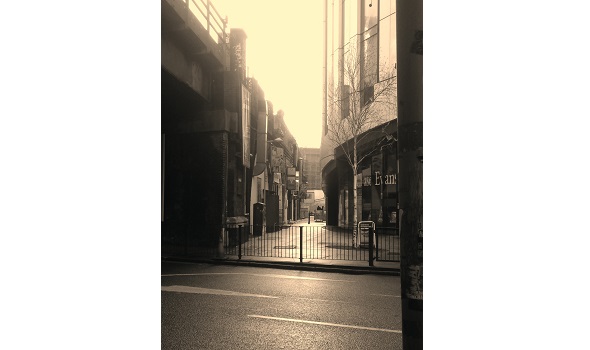
Let the alley draw you in.
This little alley is home to tasty Latino eateries, tucked away opposite Elephant and Castle shopping centre. Eagle’s Yard offers little coves of friendly places to eat, drink and speak Spanish and Portuguese. Again, affordable prices, authentic food and a feeling of being with like people or experiencing a taste of a different culture for a first time.
It is a street well worth the visit and yet so easily missed. Like true nuggets of gold that you have to dig for, else you miss out. To build stronger communities we need places like this that allow the welcoming space to make visible different communities and where British people can also come and appreciate, learn and benefit from the spaces and what the other cultures have to offer.
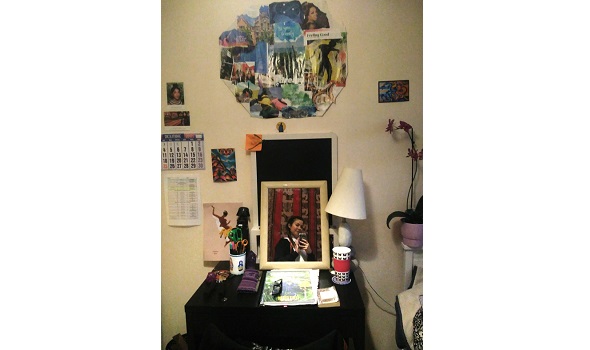
Self portrait
This self-portrait is an exploration of my own personal journey of integration. The self-portrait is taken in my room, a space where I feel most parts of myself are integrated. Here I express my mix of cultures, Bolivian, British, German, and the mix of cultures that I have loved exploring, Chinese, Japanese, native American and Indian to name a few. Then I include elements from the cultures of sports, spiritual practice, personal development, creativity, art and philosophy which are meaningful to me.
Integration: a journey to feel comfortable within the community around me and on a more personal level, how do I represent my identity to others?, or perhaps an even deeper question, what is my identity?
A big part of the integration journey has been first asking this last question, many, many times. In fact, sometimes I feel I am still answering it. Though perhaps now the difference is I am defining my different interests and beliefs, rather than core representations of the self.
Also I feel the older I get, the more I feel I am able to integrate both my cultures in a way that works for me, and so the process changes again, rather than forced assimilation, it is integration through inquiry and choice.
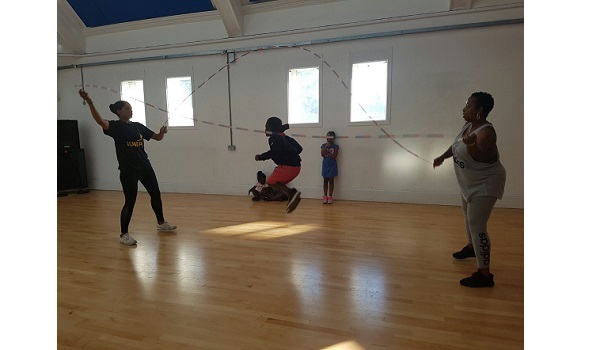
Double Dutch
I am part of the double dutch community in West London, which is an amazing way to integrate the community. Sports like this bring people together. We have supported elderly people to jump in the ropes, children as young as 3, people who don’t ‘do’ sports and people of all shapes and sizes from all communities.
On a recent trip to Paris with the ‘Jump LDN’ team, we got held up in Calais for 7 hours. And to kill the time in the queue, we got out of the car and started up the double dutch in the car lanes and felt completely at home doing so.
Our group is completely diverse with people from all over the world. We all feel completely integrated and at home with each other, and in the ropes.
Perhaps this is what I want to say about integration, that it is about making people feel at home. Wherever they are. British tourists will rave about going travelling and how people from other countries welcomed them in their homes and to meet their families, shared with them if they had a little or a lot, showed them around. This is how we should think about integration. Home, welcome, compassion, curiosity, kindness. In the spirit of Ubuntu. Creating communities without borders - integration is an opportunity for connection and solutions, not assimilation, annihilation of the other.
Consider how you would want to integrate in moving to another culture and treat people in that way.
Final message: think before you act, person to person, community minded and politically minded. Do you know this person’s history? Do you know their current situation - economically or how they are living? Chances are that you don’t, so how can you judge/ point the finger at them and blame them?
It is as Chimananda Ngozi Adichie said that the problems with stereotypes of immigrants and of whole countries, or even continents (for example people describe Africa as a country) is that it only tells one story and not the whole.
I live in hope that we will create and build a more compassionate and less ignorant world.
These photos and accompanying writing were made as part of the Changing Lenses; London stories of Integration project. You can listen to my podcast for the project here: https://soundcloud.com/migrant-voice/tamya


